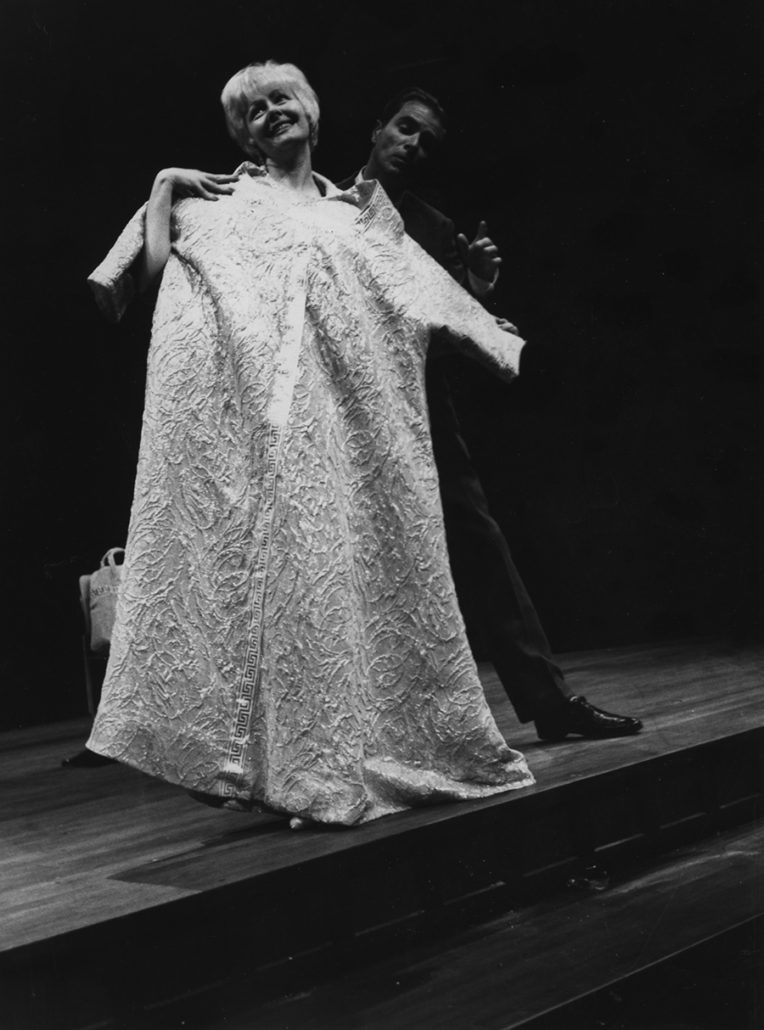The Comeback
1964
4m, 2w; single set. DPS
Darlene
1998
1m, 1w; simple set. BBP
The Golden Fleece
1967
1m, 1w; no set. SF

Luckily, while we were performing it in New York, Gordon Davison, the producer of the Mark Taper Forum in Los Angeles, happened to stop by and see its possibilities for filling a spot which had just become available at his theatre. We quickly opened the play there with a different cast., namely Helen Westcott and Tim O’Connor. The play got excellent reviews, despite the fact that our leading lady, nervous about her career, had consulted the bottle excessively on opening night. I remember stopping by her dressing room to wish her well and finding her slouched on the couch in tears with the stage manager pouring coffee down her throat while the understudy frantically tried to learn her lines in the hall. I thought I had lost a major chance to succeed in the strange world of show business, but after a considerable delay, Ms Westcott persuaded the director she was ready to play the play, and play it she did, adding at least ten minutes to the evening because of her painstakingly slow delivery.
The Love Course
1969
2m, 2w; fluid set. SF
The Old One-Two
1971
2m, 2w; fluid set. SF
The Open Meeting
1968
2m, 1w; simple set. SF
Like The Problem, The Guest Lecturer, and The Fourth Wall, this is also an excursion into the Theatre of the Absurd which very much influenced me at that time. In those days, when I was still living outside of Boston and teaching at M.I.T., I was very much influenced by a local resident theatre called the Theatre Company of Boston. Jon Voight, Dustin Hoffman, Paul Benedict and Stockard Channing all performed there, under the direction of David Wheeler, and gave us welcome doses of Beckett, Pinter, Genet, Ionesco, and many other playwrights from abroad.